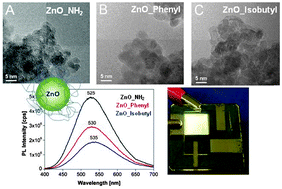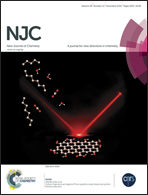Organo-modified ZnO nanoparticles: tuning of the optical properties for PLED device fabrication
Abstract
Organo-modified ZnO nanoparticles were synthesized in basic media through a co-precipitation method, starting from a solution of zinc acetate in methanol and three different organosilane species (i.e. 3-aminopropyl-triethoxy silane, isobutyl-triethoxy silane and phenyl-triethoxy silane). Following this one-pot procedure, highly luminescent nanoparticles with organic species covalently bound on the ZnO surface were successfully obtained. The samples were studied through a multidisciplinary approach aiming to define their structural, morphological and surface properties in relation to the different organosilanes used for the ZnO preparation. Furthermore, a comparison of the optical features of the produced materials was also attained. Among the different ZnO nanoparticles, those functionalized with isobutyl groups were added to a light-emitting poly(p-phenylene vinylene) derivative copolymer (Super Yellow of the Merck Company) in order to obtain a novel composite material with enhanced emission properties. The latter was used as an active layer in the fabrication of a highly efficient Polymeric Light Emitting Diode (PLED) device.


 Please wait while we load your content...
Please wait while we load your content...